Key takeaways:
- Journaling aids self-reflection, enhances creativity, and tracks writing progress, providing insights that boost confidence and passion for storytelling.
- Agatha Christie’s writing style inspires deeper thematic exploration and attention to detail, influencing the author’s own character and plot development.
- Daily journaling practices, including freewriting and using prompts, stimulate creativity and help writers visualize their character arcs and narrative structures.
- Personalizing journaling through themes, sketches, and letters to characters fosters a deeper emotional connection and enhances the creative writing process.
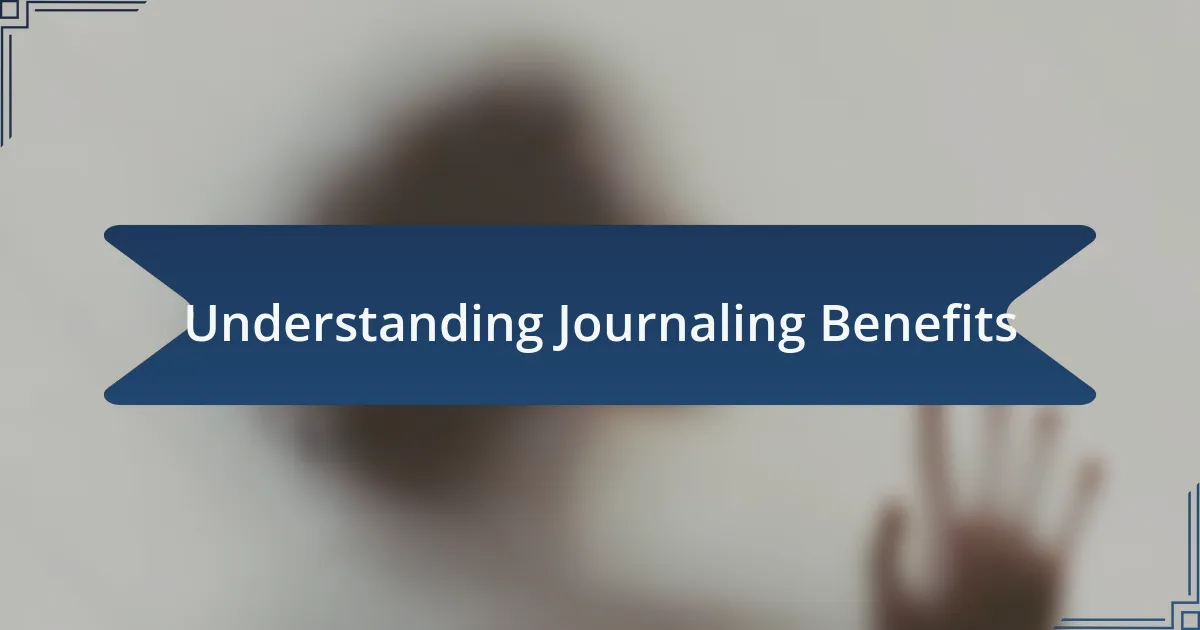
Understanding Journaling Benefits
Journaling offers a space for self-reflection that can be incredibly beneficial for any writer. I recall a time when I was stuck on a plot twist; pouring my thoughts into a journal helped me sift through the chaos and uncover hidden ideas. Have you ever noticed how writing can clarify your thoughts? It’s like shining a light on the shadows of uncertainty.
Moreover, the act of journaling fosters creativity by allowing for unfiltered expression. I remember a morning when I simply wrote about my day without any constraints; what flowed out was surprisingly inspirational and led to an entire chapter. How liberating it is to see your thoughts materialize on paper, free from the pressures of perfection!
Additionally, journaling serves as a powerful tool for tracking your growth as a writer. Looking back at my old entries often reminds me of the progress I’ve made and the challenges I’ve overcome. Have you charted your journey? I find that this retrospective insight not only boosts my confidence but also fuels my passion for storytelling.

Exploring Agatha Christie’s Influence
Exploring Agatha Christie’s influence reveals how her meticulous plotting and complex characters can inspire my own writing journey. I remember reading her work and being struck by the way she constructed twists that left me breathless. It sparks a question: how can one writer’s genius shape the craft of another? I strive to emulate her clarity and attention to detail in my own plots, hoping to weave captivating narratives that resonate with readers just as hers do.
Her ability to create a sense of place and atmosphere is something that continually inspires my journaling sessions. I vividly recall my musings after finishing “Murder on the Orient Express,” where I was compelled to describe settings with vivid detail. It sparked a realization in me: the environment in storytelling often breathes life into the characters and plot, much like Christie’s layered narratives bring her worlds to life.
Diving deeper into her themes of justice and morality also leaves a profound impact on my writing. I find myself reflecting on the ethical dilemmas presented in her stories, which often force characters into corners where choices have significant consequences. Have you ever pondered how moral conflicts can add depth to a story? Through journaling, I explore these complexities, pushing myself to consider the greater implications within my narratives. Christie’s legacy challenges me to infuse my work with such thought-provoking themes.
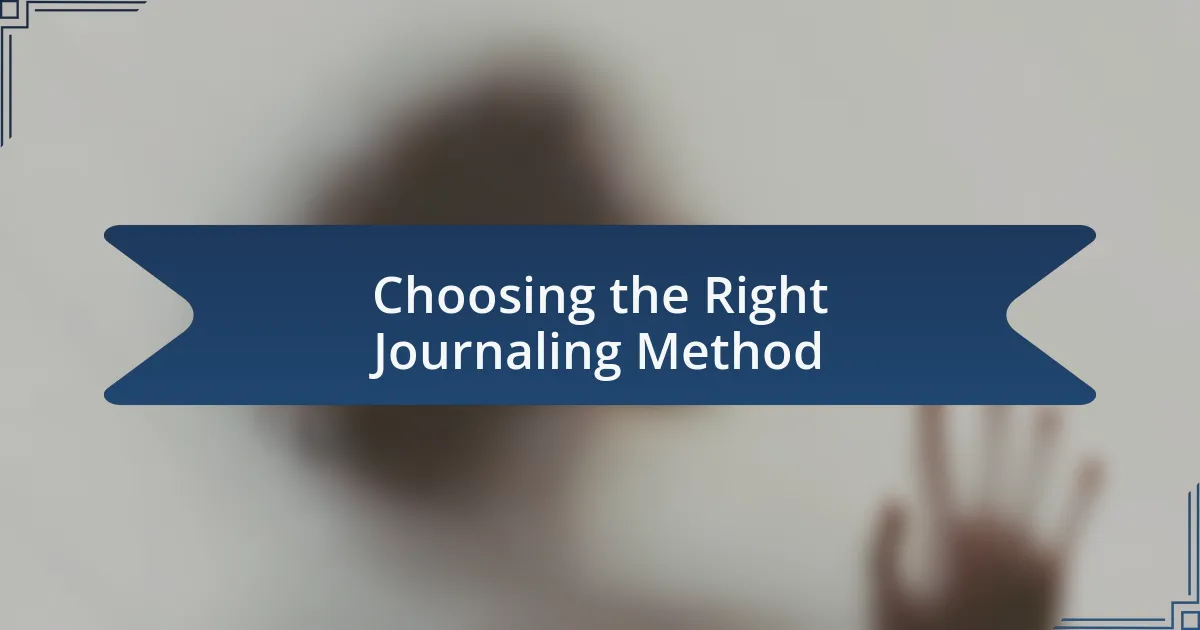
Choosing the Right Journaling Method
Choosing the right journaling method can significantly impact your writing journey. Personally, I find that freewriting helps me unleash my thoughts without inhibitions. Recently, I spent an afternoon jotting down ideas for a mystery plot, and the flow of words felt liberating, almost like Christie’s characters revealing secrets on the page.
On the other hand, I’ve experimented with bullet journaling for a more structured approach. I remember creating a layout to track my character development—a simple yet effective way to visualize their arcs. When I can lay out my thoughts and observations with clear headings and bullet points, it becomes easier to see patterns and connections that might not have been obvious before.
Have you ever considered using prompts as a way to spark creativity? I often turn to specific questions inspired by Agatha Christie’s storytelling techniques, such as: “What hidden motives might a character have?” Answering these prompts not only deepens my understanding of my characters but also enriches the plots I develop. This method intertwines inspiration and discipline, ensuring that journaling is both a creative outlet and a powerful tool for my writing.
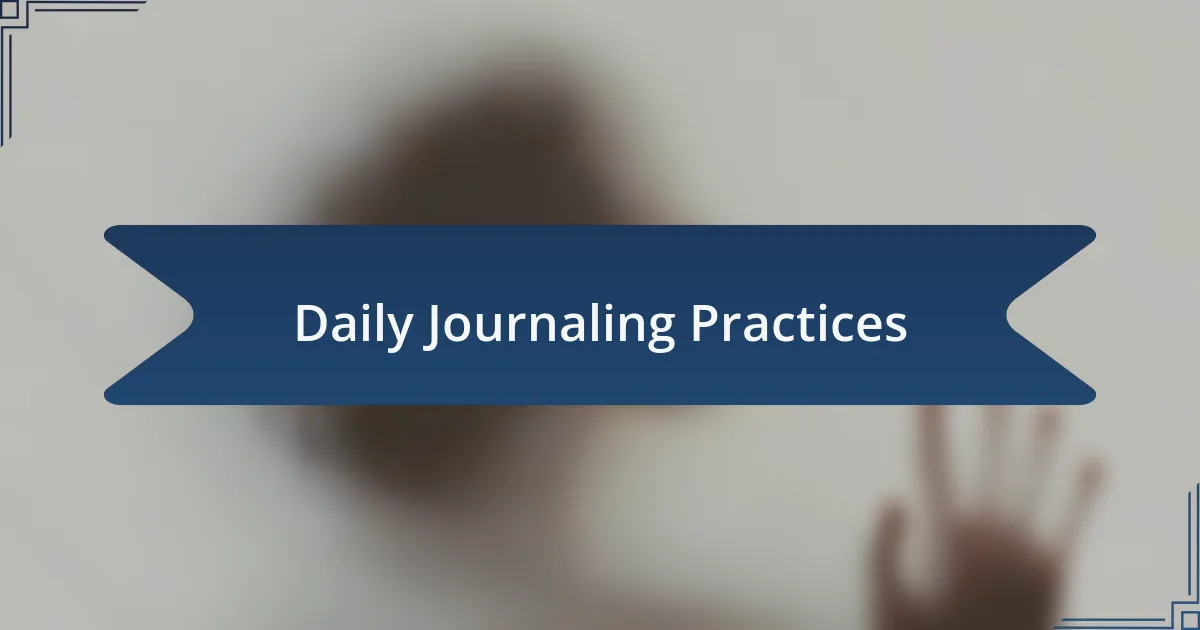
Daily Journaling Practices
Engaging in daily journaling practices can greatly enhance your writing discipline. I remember a time when I committed to journaling every morning, even if only for ten minutes. Those quiet moments became a sanctuary where I explored my thoughts and feelings, often leading to unexpected story ideas that felt incredibly rich.
One effective technique I’ve found is writing at the end of each day, reflecting on what went well and what could be improved. There was one evening when I noted my frustrations with character development, and from that reflection emerged a whole subplot that transformed my story. How often do we overlook the lessons our day-to-day experiences teach us, especially when we take a moment to write them down?
Sometimes, I add sensory details to my entries—what I saw, heard, or smelled during the day. I vividly recall writing about the aroma of an autumn evening, which inspired a scene filled with intrigue and atmosphere reminiscent of Christie’s novels. This practice not only sparks creativity but also reinforces my ability to create vivid settings in my work. Have you thought about the power of your senses in your writing? Integrating these elements into your journaling can unlock new dimensions in your storytelling.
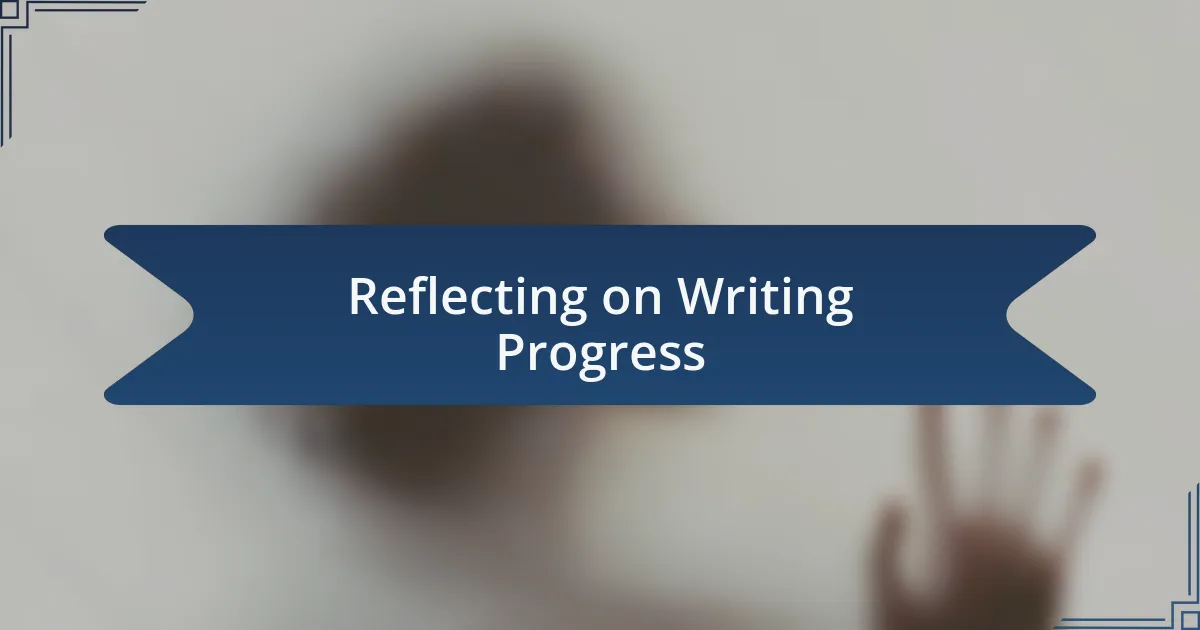
Reflecting on Writing Progress
Reflecting on my writing progress has become an essential part of my journaling routine. I often jot down milestones, however small, like completing a chapter or fine-tuning a character’s arc. Recently, I noted that I had spent two weeks fixated on a particular plot twist that just wasn’t working. Taking a step back to reflect on this challenge not only helped me identify the root of my frustration but inspired an entirely new direction for the story.
In my entries, I frequently write about my emotional state as a writer—how excitement transforms into anxiety and then eventually turns into determination. For instance, while revising a draft, I documented feelings of self-doubt that crept in when I faced harsh feedback. But rather than letting those emotions derail me, I redirected them into my characters’ conflicts, which ultimately made their struggles more relatable. Isn’t it fascinating how our vulnerabilities can lead to stronger narratives?
This reflective practice isn’t just about recognizing hardships; it is equally about celebrating victories. I keep a small section in my journal dedicated to moments of joy, such as receiving positive feedback on a scene that resonated. Those entries remind me why I write and help maintain my motivation when things get tough. Have you taken the time to acknowledge your own achievements? Celebrating those wins can truly reignite your passion for writing.
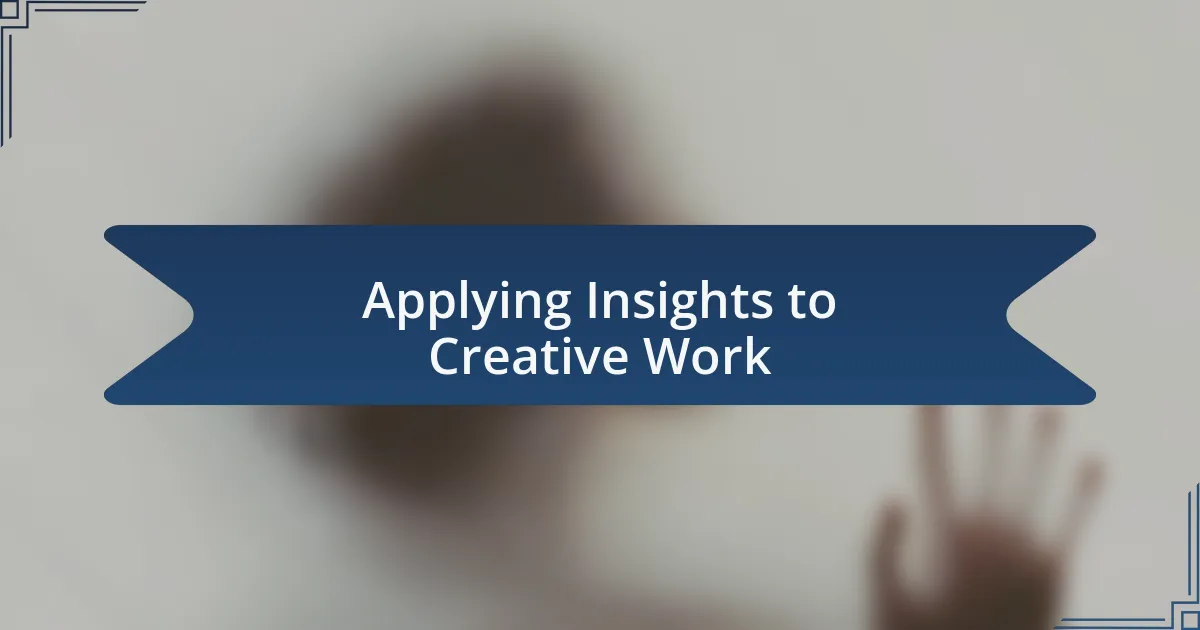
Applying Insights to Creative Work
Applying insights from my journaling practice to my creative work has been transformative. For example, I once struggled with developing a protagonist that felt genuine. Through my journaling, I unpacked my own experiences of vulnerability, leading me to infuse my character with traits drawn from real-life moments of courage and doubt. This approach not only deepened my character’s emotional landscape but also resonated with readers in unexpected ways.
When I revisit my journal entries, I often uncover themes or ideas that spark new storylines. One particular afternoon, I stumbled upon a reflection about resilience that I had penned during a particularly difficult week. That insight inspired a subplot about enduring hardship, mirroring my own journey as a writer. Have you ever had a passing thought in your journal that transformed into a full-blown story idea? It’s remarkable how our reflections can guide us to explore new horizons in our narratives.
Additionally, I actively look for patterns in my emotional responses as I write. For instance, during a period of intense frustration, I noted how it often corresponded with my attempts to force certain plot points. By recognizing this cycle, I learned the importance of allowing my story to breathe and evolve naturally. Have you kept track of your emotional trends? Such awareness can unlock new creative pathways and help alleviate the pressure we sometimes put on ourselves.

Personalizing Your Journaling Experience
Personalizing your journaling experience is all about making it uniquely yours. For instance, I like to create themed sections in my journal that align with my interests and writing goals. One month, I dedicated my entries to exploring settings in fiction, jotting down ideas from places I visited and how they could influence a storyline. Does this resonate with you? Tailoring your journal to your specific creative needs can provide a much richer foundation for your writing.
I also find that adding personal touches, like sketches or quotes that inspire me, enhances the emotional connection to my entries. A simple doodle of a character’s silhouette or a powerful line I came across can trigger memories or emotions that directly influence my work. Have you ever felt that a simple image or quote spoke directly to your creative journey? This kind of personalization transforms a standard journal into a vibrant tapestry of inspiration.
Moreover, I enjoy writing letters in my journal—addressed either to my future self or to my characters. This technique allows me to dive deeper into their motivations and conflicts. Recently, I wrote a heartfelt letter to a character facing a moral dilemma, which helped me clarify their internal struggles as a writer. Isn’t it fascinating how this dialogue can bridge the gap between my thoughts and the characters I create? Personalizing your journaling this way turns it into an essential tool for not just capturing thoughts but fostering an intimate creative dialogue.